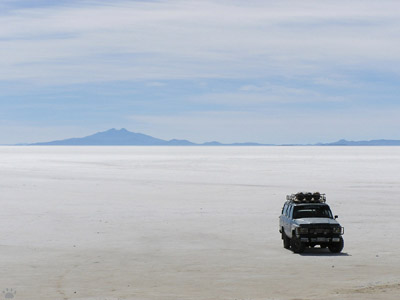
Exploring Salar de Uyuni, Bolivia.The Andes Part 5: Salar de Uyuni
The Bolivian Altiplano has a lot of beautiful lakes - some fresh, some saline and very colorful, some dry. The collection includes the largest salt flat in the world - Salar de Uyuni, an expanse of white salt 10,582 sq. km (4,085 sq. miles) in size. It is dry for most of the year, but is covered by a this layer of water during the rainy season (usually November-March).

Walking across Salar de Uyuni. |
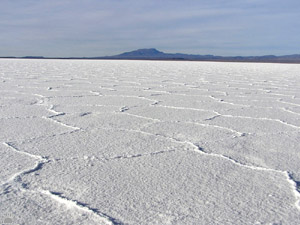
Patterns of the salt, Salar de Uyuni. |
The salar is located at 3653 m above the sea level, and is estimated to contain 10 billion tons of salt. It takes a few hours to drive across. |
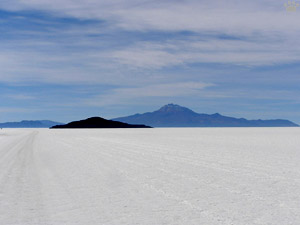
Approaching Isla de los Pescadores, Salar de Uyuni. |
 |
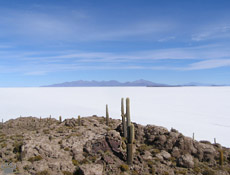
Views from Isla de Los Pescadores. |
 |
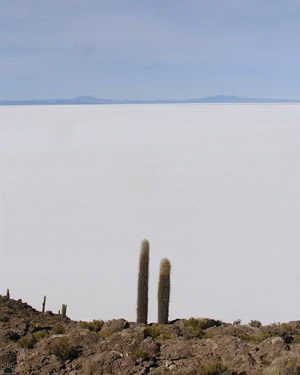
Cacti, Isla de Los Pescadores. |
There are islands on the salar, isolated mountains sticking out through salt, like nunataks in the middle of a glacier. The most scenic (and sometimes too touristy) island has a strange name Isla de Los Pescadores (Fishermen's Island). |
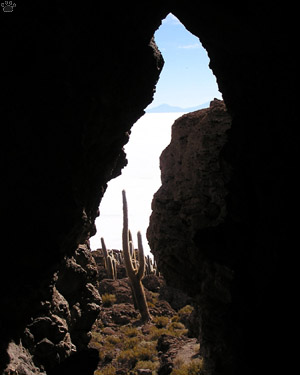
Rock crevasse, Isla de Los Pescadores. |
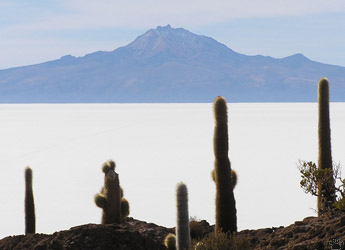
Volcan Tunupa (5400 m) forms a peninsula on the northern side of the salar. |
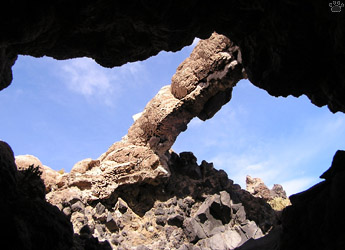
Rock bridge, Isla de Los Pescadores. |
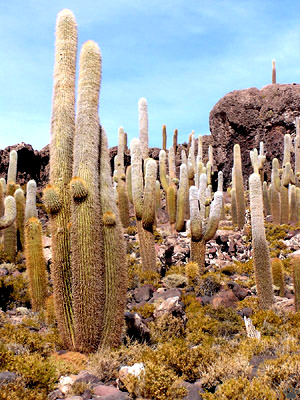
Cactus forest, Isla de Los Pescadores. |
The island is famous for groves of giant cacti, rock formations, and stunning views. Nights are freezing here, but afternoons are often warm enough to drive out into the salar and have sex on the roof of your jeep - a weird experience. |
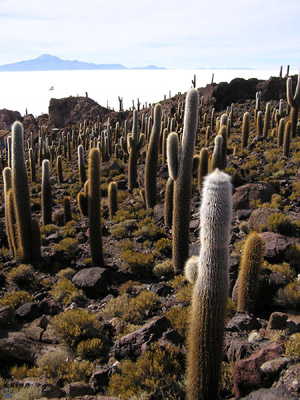
Cactus forest, Isla de Los Pescadores. |

Acanthocalicium spiniflorum, Salar de Uyuni. |

Baby Echinopsis atacamensis pasacana, Salar de Uyuni. |
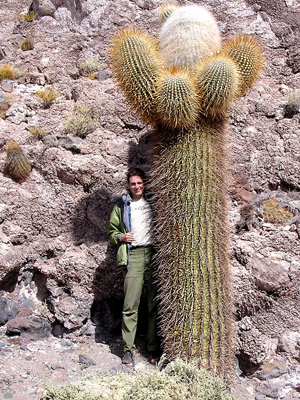
E. a. pasacana, Isla de Los Pescadores. |
Some cacti are over 30' (9 m) tall and might be hundreds of years old. The most common is Echinopsis atacamensis pasacana (the incorrect name "Trichoreus" from Lonely Planet's guides has spread all over the Internet). |
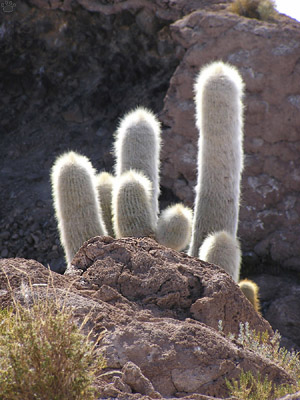
Oreocereus celsianus, Isla de Los Pescadores. |

Soehrensia nivalis, I. de Los Pescadores. |
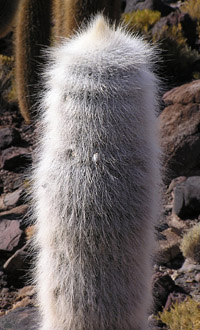
O. celsianus, I. de Los Pescadores. |
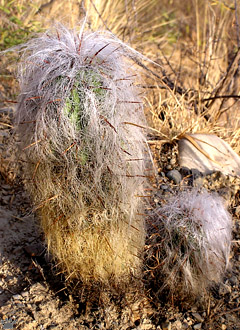
Sh. senile, I. de Los Pescadores. |
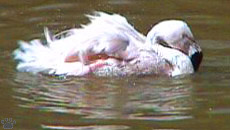 |
When the salar is covered with water, three species of flamingo use it for nesting. The most common is Chilean flamingo, found here in flocks of thousands. The birds feed on single-cell algae that grow rapidly in brine. |
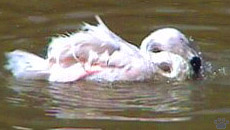 |

Chilean flamingo (Phoenicopterus chilensis). |
When the salar is dry, the flamingo flocks move elsewhere, but flocks of varying size can usually be found at smaller lakes nearby, especially at Salar de Coipasa to the north, a huge salt flat that always has water in the center. |
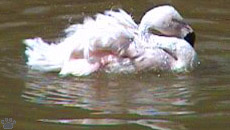
Chilean flamingo, Laguna Coipasa. |
 |
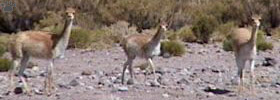
Common species of Salar de Uyuni shores: left - mountain viscacha (Lagidum viscacha), top - vicunas (Vicugna vicugna), right - black-hooded sierra- finch (Phrygilus atriceps). |
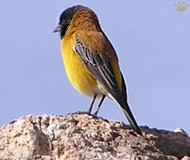 |
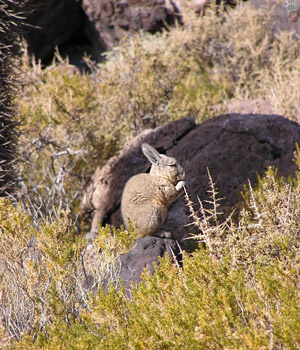
Mountain viscacha, Isla de Los Pescadores. |
It is unusual to see any other wildlife on the salar itself (although I once saw a fox walking across), but the shores and islands are full of interesting animals, from tiny lizards to vicunas. Isla de Los Pescadores is inhabited by lots of viscachas. |
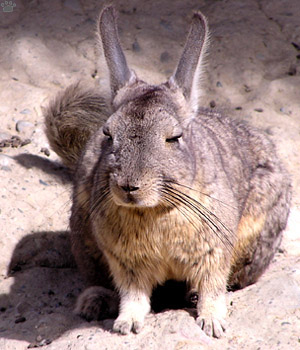
Mountain viscacha, Salar de Uyuni. |
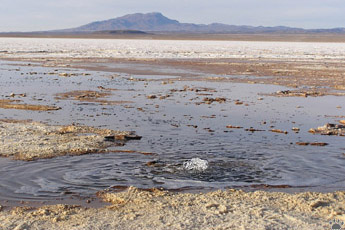
Spring, Salar de Uyuni. |

Salt works, Salar de Uyuni. |

Salt, Salar de Uyuni. |
There are a few springs breaking through the salt. Called "eyes" (ojos del salar), they are a major driving hazard during the rainy season. |
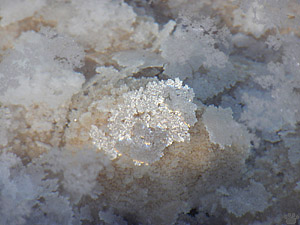
Salt, Salar de Uyuni. |
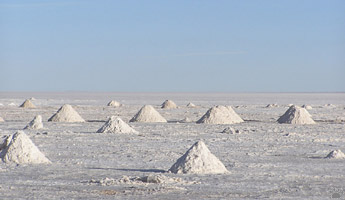 |
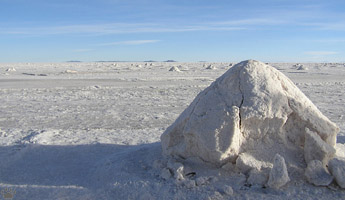 |
| Salt works, Salar de Uyuni. |

Church in Villa Martin village on the southern shore of the salar. |
People have been mining salt from the salar for centuries, and 25,000 tons are now extracted annually. Piles of drying salt are a common sight on the eastern side. There are a few very old villages along the shores, with beautiful churches. |
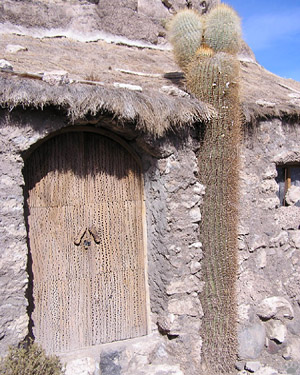
House door made of cactus wood, Isla de Los Pescadores. |
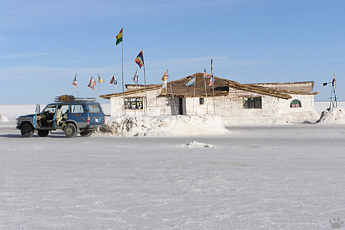 |
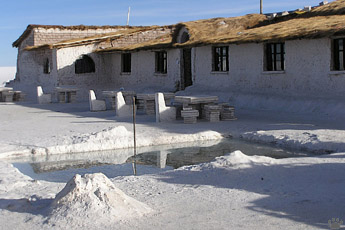 |
| Salt hotel, Salar de Uyuni. |
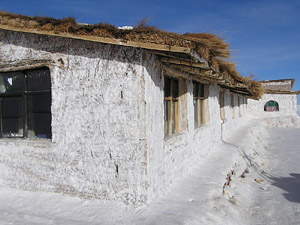
Salt hotel, Salar de Uyuni. |
Nowadays the main source of income here is tourism. Some hotels have been built of salt blocks, and have salt furniture in some of the rooms. |
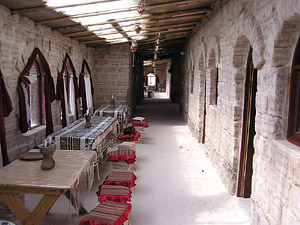
Salt hotel, Salar de Uyuni. |
 |
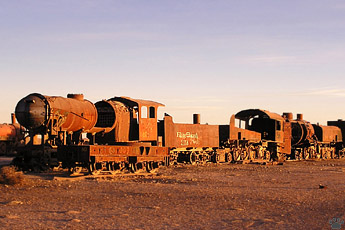 |
| Train Cemetery, Uyuni. |

Train Cemetery, Uyuni. |
The town of Uyuni is an important railway junction, and there's a large collection of old steam locomotives at a nearby Cementerio de Trenes. |
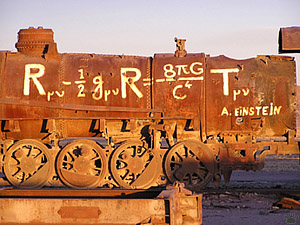
This graffiti is Einstein's field equation in mathematical form. Uyuni. |
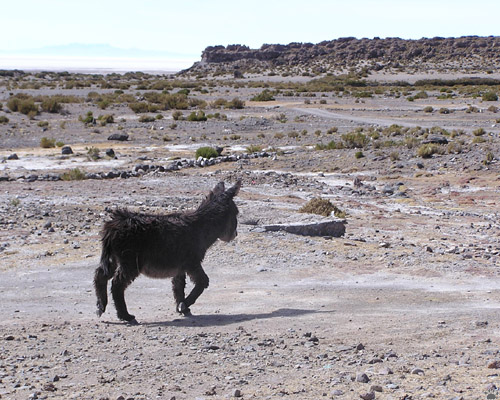
Donkey, Salar de Uyuni. |
Part 6. Tiahuanaco
Back to Part 4
Home |